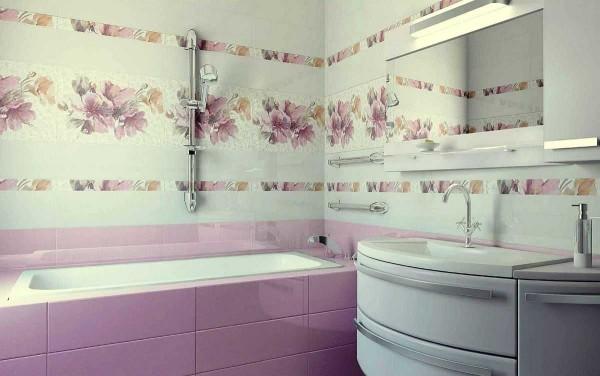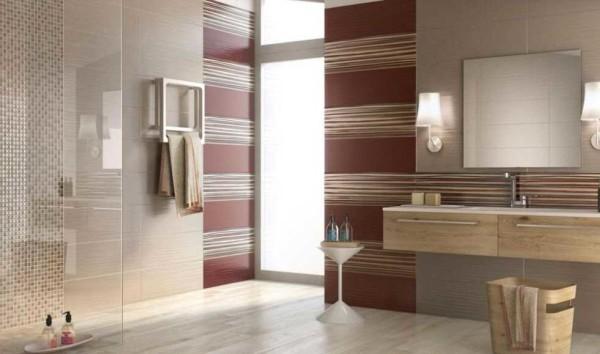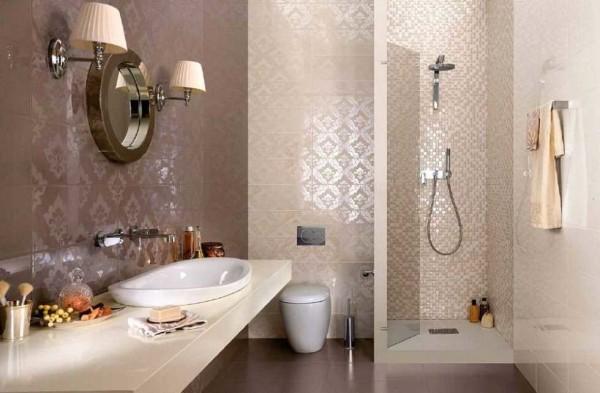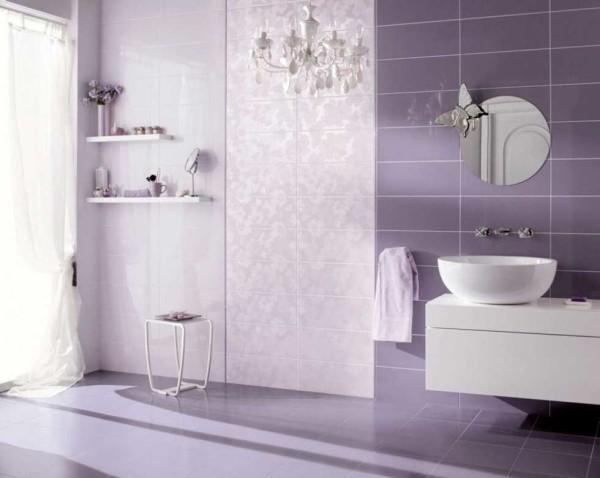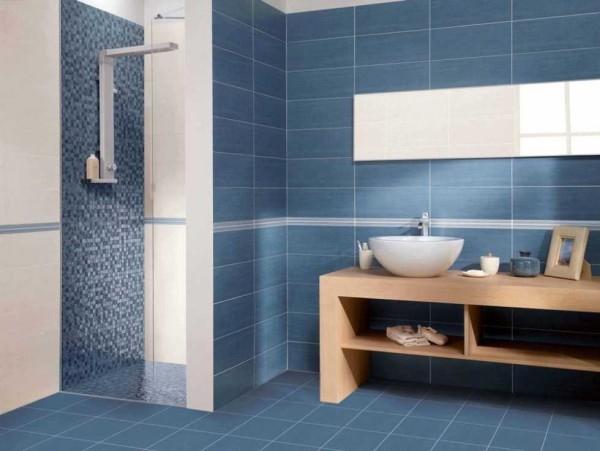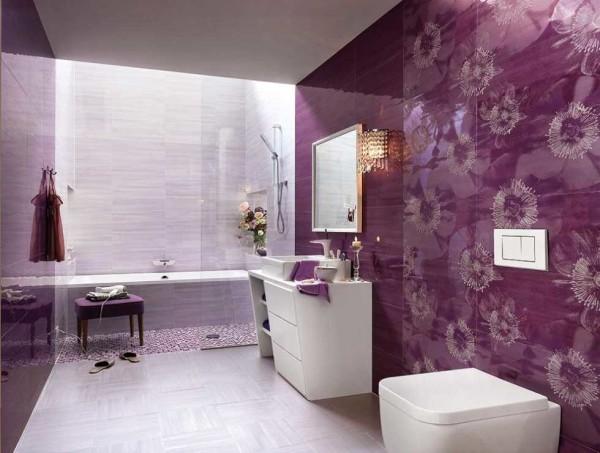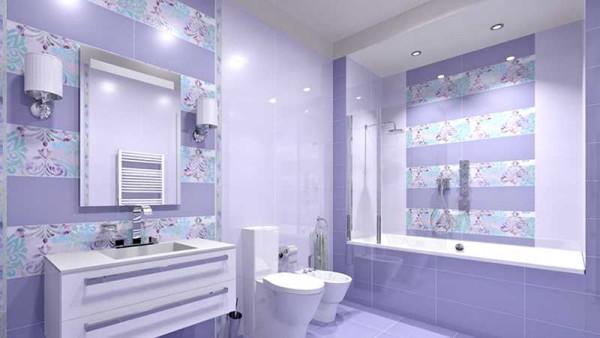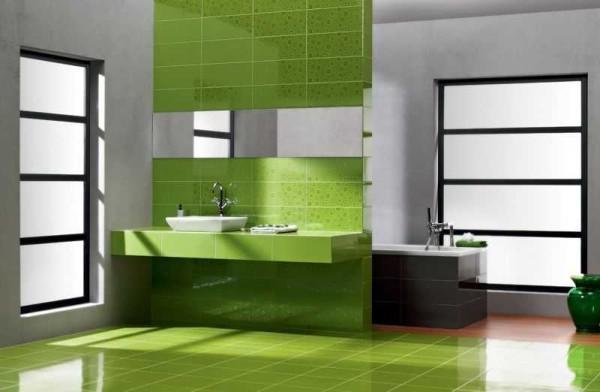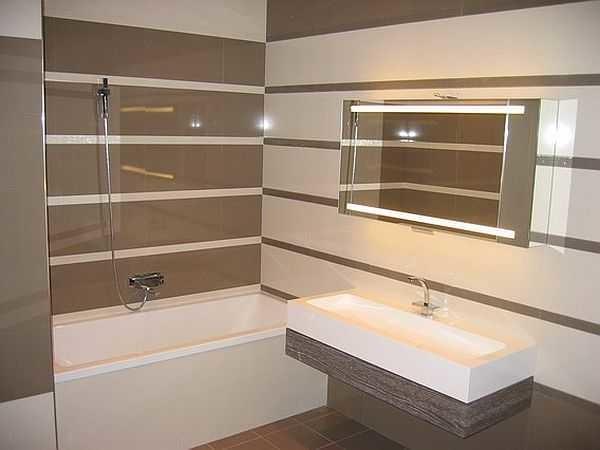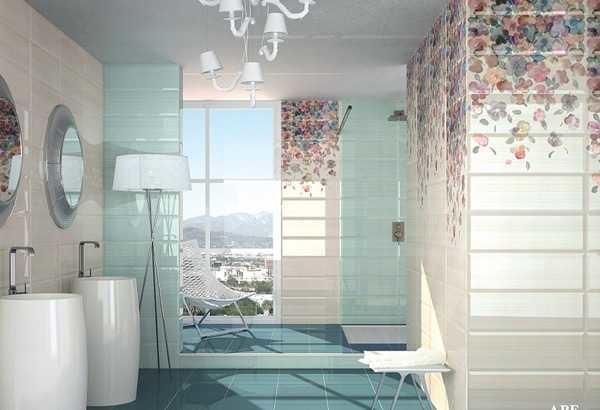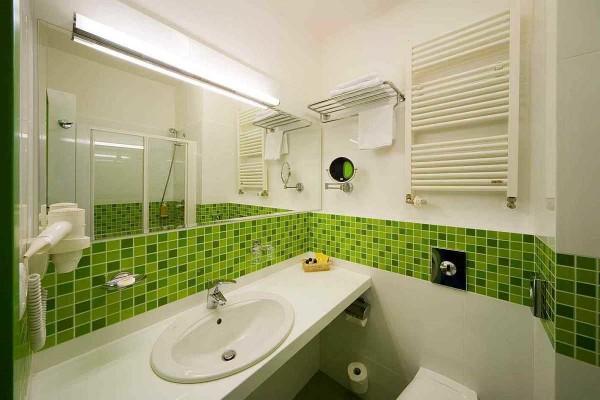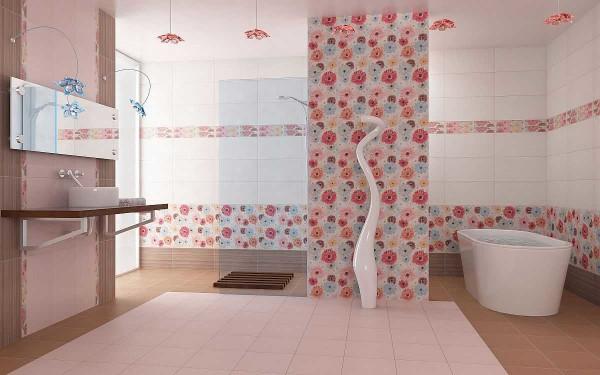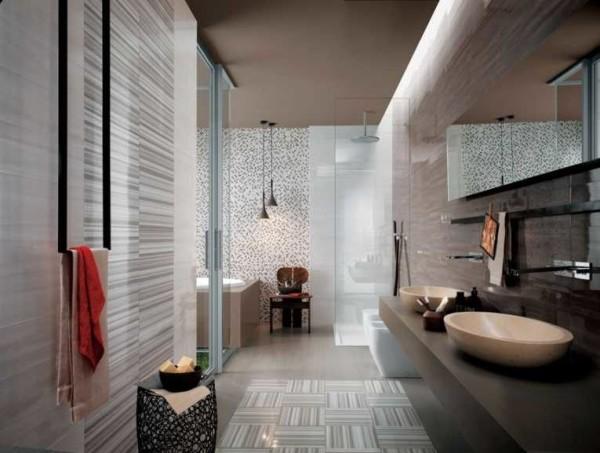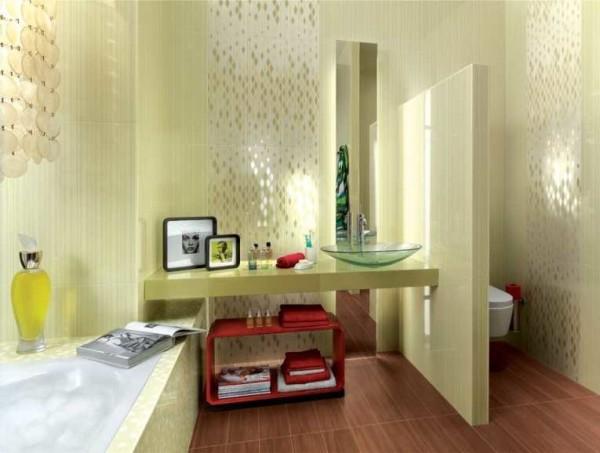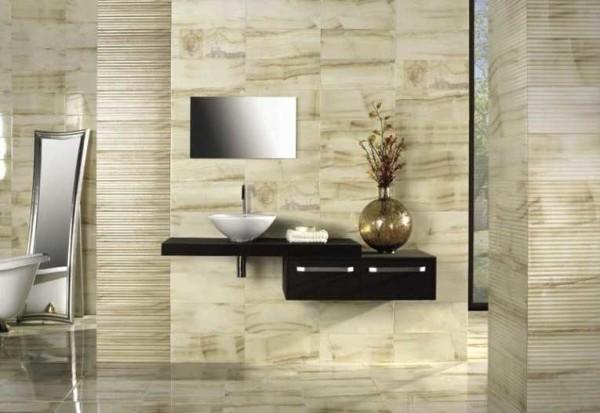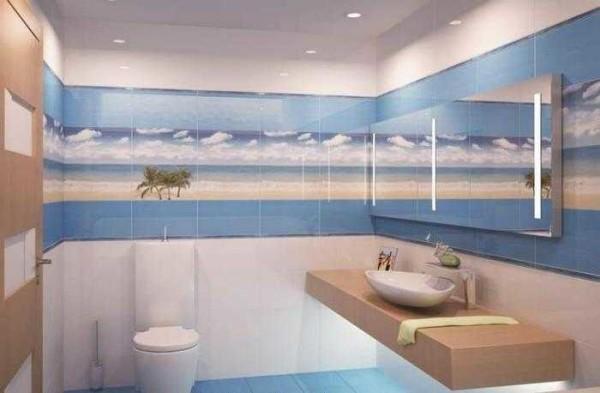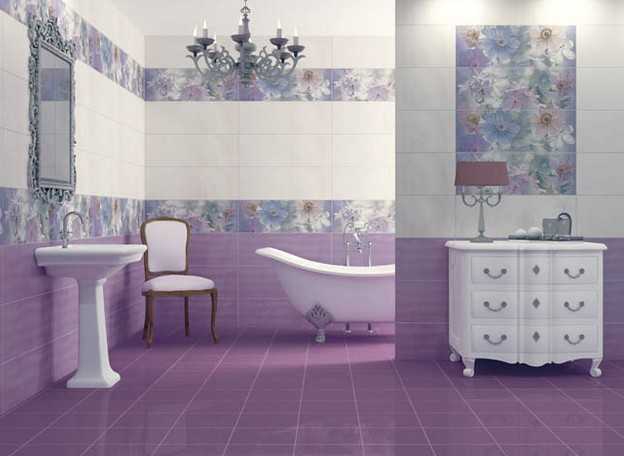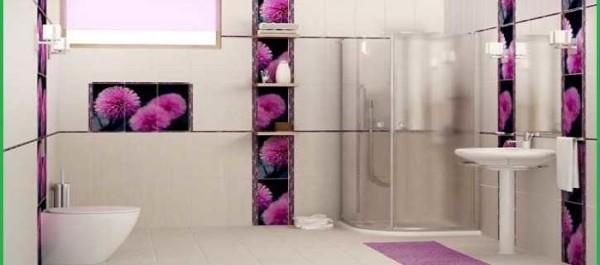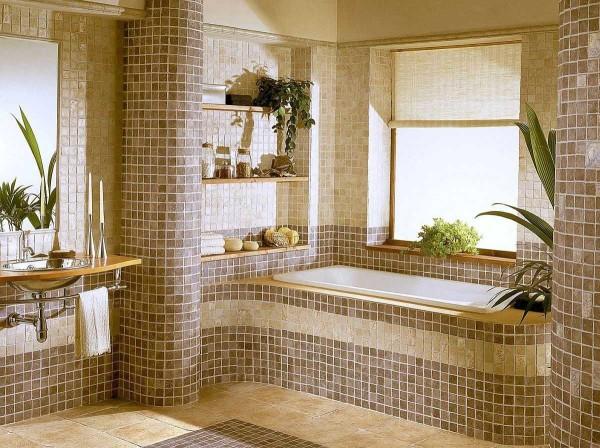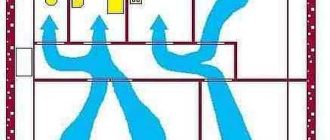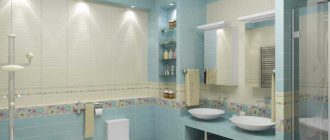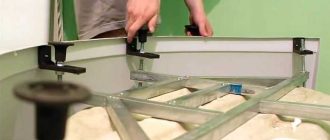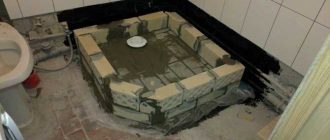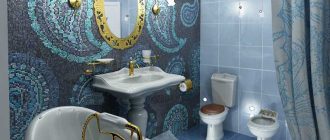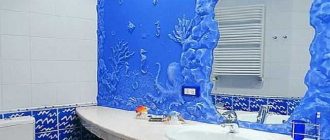Bathroom renovation is one of the most time-consuming undertakings: there are so many time-consuming operations. The finishing of the bathroom with tiles completes everything. Also not the easiest task, requiring knowledge of technology. In addition, it is necessary to develop a scheme of laying, but not somehow, and beautifully. And also – count the number and do not make a mistake.
Artikli sisu
Technology
According to modern requirements tiles are laid on a level base. Level – this is with a maximum height difference of 5 mm per 1 square meter. m. If the walls or floor do not meet this requirement, the walls need putty – with a deviation of up to 3 cm – or plaster for more crooked surfaces. The floor is then leveled with a screed.
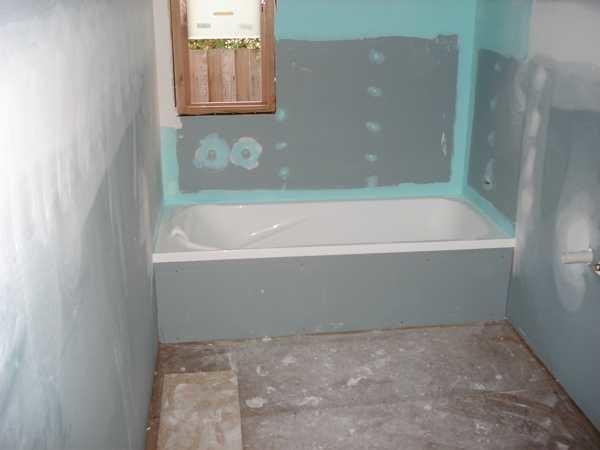
If there is already a tile on the floor, but you want to replace it, you will have to knock down the old one, level more or less all the differences and pour concrete mortar, leveled with beacons. You can use self-leveling mixtures, but they also need to be leveled, although not as carefully as ordinary concrete. Once the concrete has gained about 50% of its design strength (about 7 days at a temperature of +20°C), the work can continue.
Sometimes the tiles on the floor cannot be removed in any way (usually small tiles). In this case, a 2-3 cm screed can be poured on top and then a new one can be laid.
How to level the bathroom walls
What to level/spackle bathroom walls with? All compositions are made on the basis of two binders: gypsum or cement. Since the bathroom is a room with high humidity, the use of gypsum plaster or putty is undesirable. No, they can be used, especially since in many high-rise buildings the walls of bathrooms are also made of gypsum. But gypsum is very hygro-sogropic and will absorb moisture from the air, from the walls. This will not be prevented by tile or glue. That he did not “pull” moisture, on the walls did not appear fungus or mold, the surface will need to be well impregnated with compositions that reduce hygroscopicity. And preferably several times. And this – additional costs, and a lot. Therefore, it is better to immediately use compositions based on cement – they initially have low hygroscopicity.
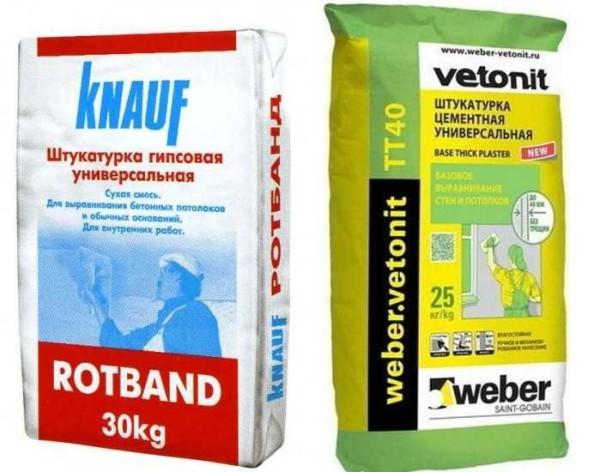
Priming
Before starting plastering or puttying, before laying tiles, all surfaces are primed. This stage should not be forgotten. Primers improve the adhesion of one layer of materials with another, which positively affects the quality of the finish. If you put the trim on the walls without primer, there is a high probability that the trim will bounce, sometimes together with putty, sometimes just with glue – where the weakest adhesion will be found.
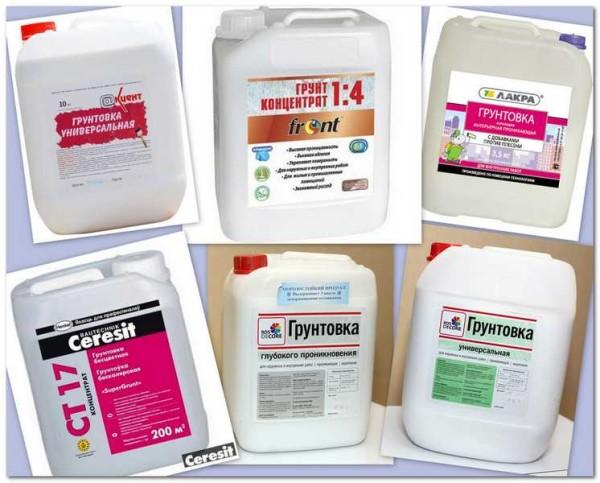
When choosing a primer, pay attention to its additional properties. In the bathroom, antifungal additives will be useful, as well as hydrophobic additives (repelling water).
How to lay tiles
Actually after all these stages begins directly finishing the bathroom with tiles. First of all, lay it on the floor. Use a special tile glue for wet rooms. Start from the door, move to the far wall. Usually along the opposite wall is a bathroom, so that all trimming will be under it.
On the leveled floor apply a layer of glue about 4-5 mm, toothed trowel remove the excess, put a tile, level it in the horizontal surface, checking the level. In the same way lay all the subsequent ones, keeping the gaps with the help of plastic crosses. On the floor usually use large format tiles, so the crosses are taken thicker – 3-5 mm.
After the glue dries (the term is indicated on the package) you can start finishing the walls of the bathroom. The technology is simple and very similar to the one described above:
- a layer of glue with a thickness of 3-5 mm is applied to the primed flat wall, the excess is removed with a toothed trowel, which forms the recesses;
- dip the tiles for a few seconds in water, put in place, press and tap with the handle of a trowel, achieving its even position in all planes;
- check the position with a construction level, checking the horizontality and verticality of the installation;
- the second one is placed next to it;
- the gap between neighboring elements is set using special plastic crosses (2-3 mm depending on the format);
- check the verticality and horizontality.
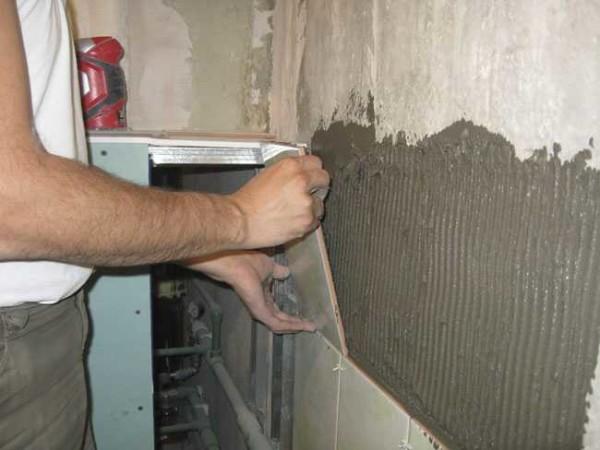
There is another way – the glue is not applied to the wall, but directly on the tiles, removing the excess with the same toothed trowel. Apply it to the wall and exactly the same alignment. This method is neither better nor worse. Choose the one that seems more convenient to you.
Gradually fill the first row – from wall to wall. On it the second is put up, and so on, already up to the ceiling, then go to the second wall. During the work, do not forget to remove the crosses. The glue sets quickly, as a result, it can be difficult to pull them out. Also make sure that the tiles are clean. All traces of glue, even the most insignificant, must be wiped. You can use a sponge or a rag, or both. Pay attention to the fact that the glue does not protrude from the seams. They should be half empty – they will have to be finished – grouted.
Trowel seams with special colored compositions, which are selected in tone or make contrasting. After the glue has dried, the grout is diluted to a paste, applied to the joints with a small rubber spatula, they also remove the excess. The residue is wiped off with a soft, non-linting cloth.
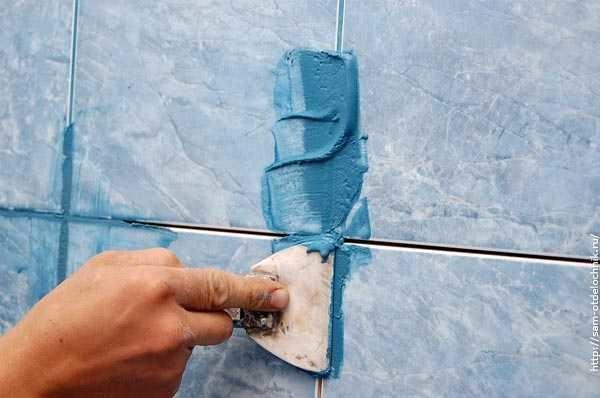
There are many more features and nuances – on the layout, design of the bathroom, doorway, etc., but in general, the finishing of the bathroom tile occurs exactly according to this technology.
Features of the layout
To get a high-quality and beautiful bathroom, you need to pre-consider the layout of tiles. Suppose you have already looked at several options of different colors or sizes. Now you need to decide what is better to buy and in what quantity. The difficulty is that today’s bathroom tile finish is sharply monochromatic from floor to ceiling. Usually combined two or three colors, but there is still some fragments with a pattern or decor. And we need to accurately calculate their number to purchase at once from one batch and not to make a mistake in this case (due to the peculiarities of the technological process, the colors of different batches can have significant differences).
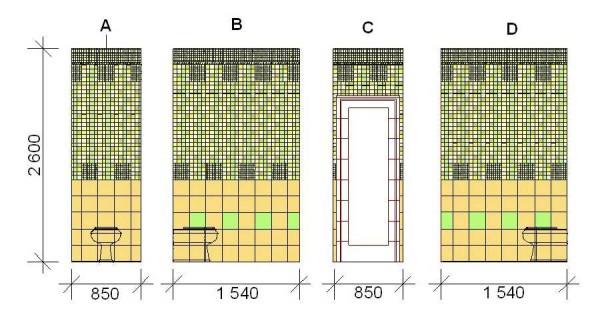
To solve this problem and, at the same time to develop a scheme of tile layout, you will need a large sheet of paper in the cell or millimetrovki, pencil and colored pencils. On the sheet draw a sweep of the room, precisely observing the dimensions and proportions. On the corresponding walls mark the location of doors, bathroom, plumbing, mirror, washing machine. All objects draw in the same scale. It is better to make a large drawing – so it will be easier to draw details, as well as count the tiles piece by piece.
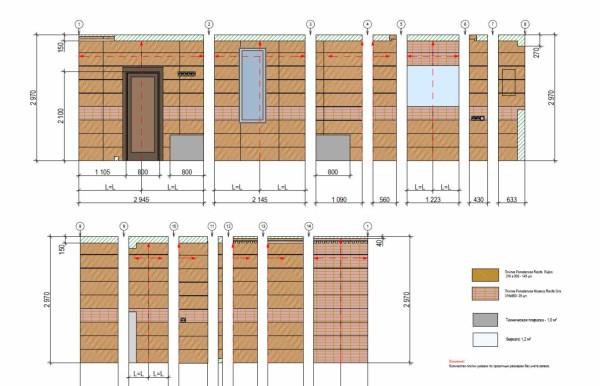
On the prepared plan, in the same scale, draw the tiles, painting it with the appropriate colors. So you can more accurately visualize how everything will look, test several options for laying out – in horizontal strips, vertical, shifting them, making them wider / narrower / higher, etc.
When you decide exactly how you want to lay out the bathroom (in terms of the location of different colors, the width of the strips and other nuances) it will be necessary to redraw the selected layout again, but already taking into account the trimming on the dimensions.
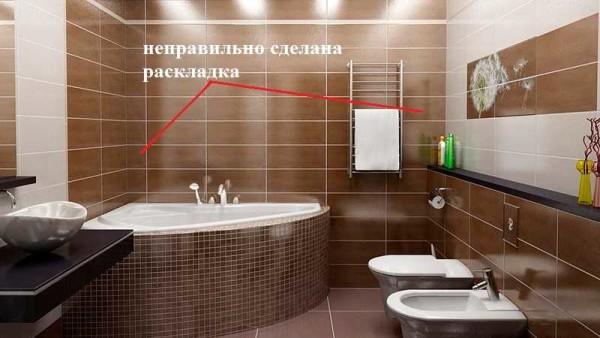
If you start laying tiles just from one of the corners, in the other will have to trim it. Since today’s trend is large format tiles, these trimmings on one side spoil the overall impression. Therefore, it is laid out relative to the center of the wall, “dispersing” the trimmings in two corners. You get a symmetrical picture, which looks much better.
Only here there are nuances. To make the wall look normal, the width of the trim should be more than half. Too narrow inserts look cramped. This is regulated by the location: on the center line you can place the seam or the middle of the tile. Draw so that only narrow strips are not in the corners.
Redraw the chosen way of laying, taking into account these moments. Then you count the quantity, taking into account those that need to be cut. Yes, the number of tiles will be more, but the look of your bathroom in this variant is much more attractive.
The principles of creating a bathroom design with your own hands are described here. Features of the design of combined bathrooms are described here.
How to tile a bathtub – rectangular, rounded
One of the important moments when finishing the bathroom with tiles – how to design the front part of the bathtub. Most often it is also tiled (another option – cover with plastic panels). But just so it will not hang, you need a base. It is made either of brick (better ceramic, not silicate, although it is cheaper) or of moisture-resistant gypsum board.
From both materials, you can lay out a wall flat or rounded. With bricks all more or less clear, just set you steal along the drawn arc, obazuya slightly broken line. It is then scuglyaetsya plaster.
To bend plasterboard, it is cut from the inside into strips with a width of 3-5 cm depending on the radius of the bend, pol lines break the plaster and bend it as necessary. Having laid out a suitably shaped base, it is primed and it is already possible to lay tiles on the glue in the standard way.
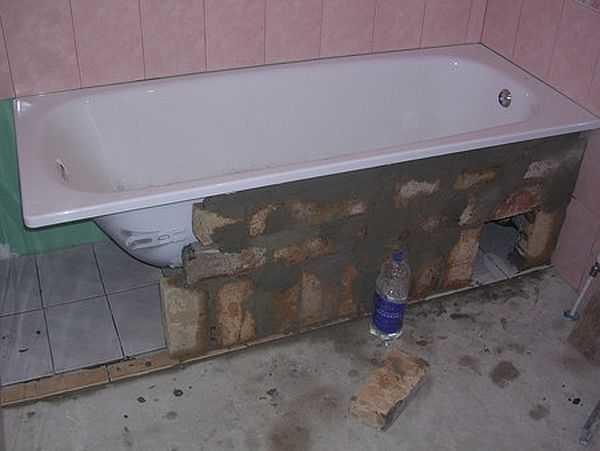
There is another subtlety when finishing the bathroom: between the edge of the bathroom and one of the walls can be a decent distance – from 5 to 15 cm. This distance must be closed with something, otherwise water will flow down, and the greater the distance, the more problematic it is to close it. The way out is to make a shelf from plasterboard, on which then glue tiles. The order of work is as follows:
- expose the bathtub strictly horizontally;
- transfer the line of the upper edge of the bathtub on the wall (angle or ruler);
- from the obtained line you set back down the thickness of the planned materials (thickness of tiles + thickness of plasterboard + thickness of the board on which all this will rest);
- attach a bar or profile along the obtained line (the upper edge coincides with the line);
- a wide board (treated with antiseptics) is attached to the profile, which reaches the edge of the bathtub;
- the gap between the board and the bathtub is filled with sealant;
- a piece of moisture-resistant plasterboard cut to size is laid on top;
- priming;
- later, when finishing the walls, this shelf is lined with tiles cut to size.
If you decide to install a shower cabin in the bathroom, read about the assembly process here.
Finishing the bathroom with tiles: photo ideas
In recent years, there are two main trends in the finishing of the bathroom:
- The use of large format tiles. Rectangular or square – it does not matter, the main thing is that the size is solid.
- The use of mosaics – glass or ceramic. These are small squares with a side of 1.5-3.2 cm, glued on a polymer mesh.
There is a third option – combining. Such options, by the way, can be particularly interesting.
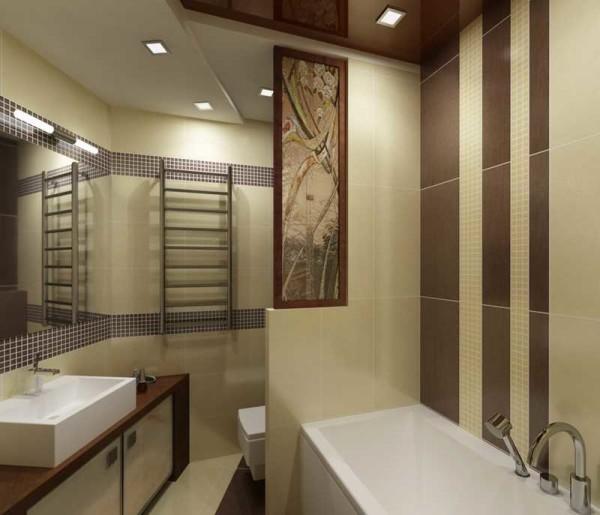
Another nuance concerning the design – rectangular tiles are more often arranged not “standing”, but “lying” – in length. This is justified, as it makes the room visually wider.
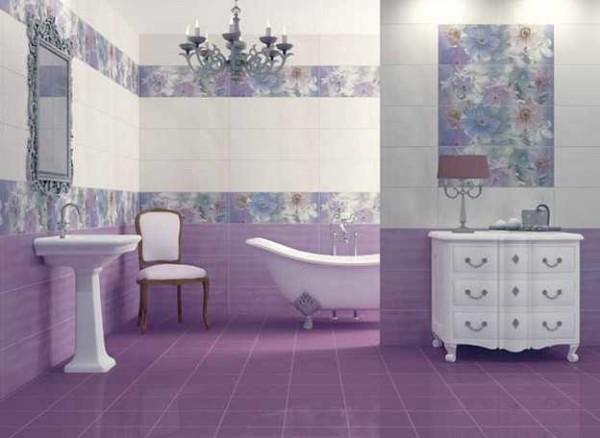
You may have noticed that more and more often use stripes – horizontal or vertical – of different widths. They are done on different walls.
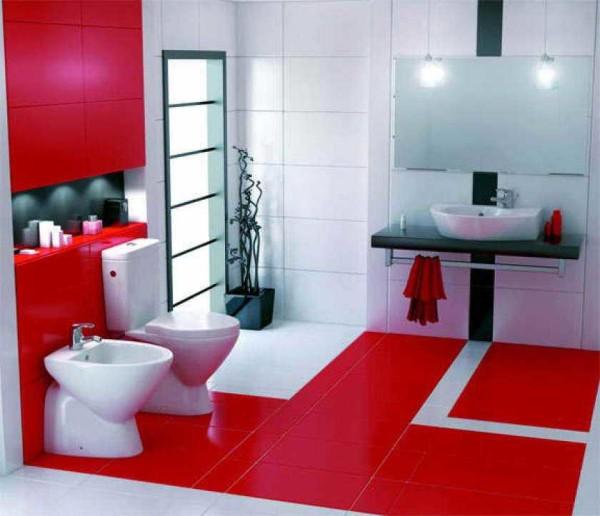
Fashion has not bypassed and drawings. Although still popular flowers or monochrome options, there are tiles that imitate different natural materials: stone, wood of different species, leather. It turns out quite interesting: the look of wood (imitations are quite high quality), and by feel – ceramic.
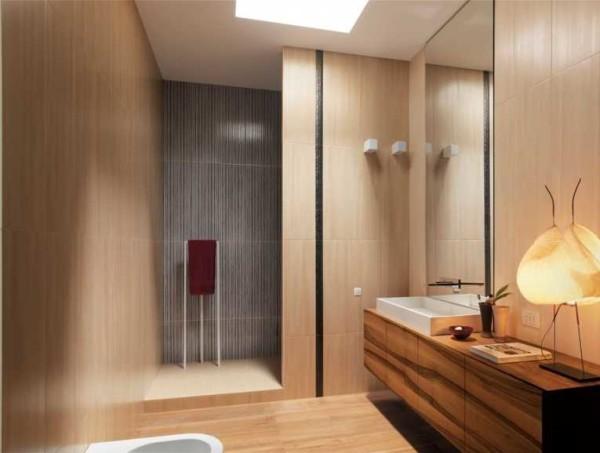
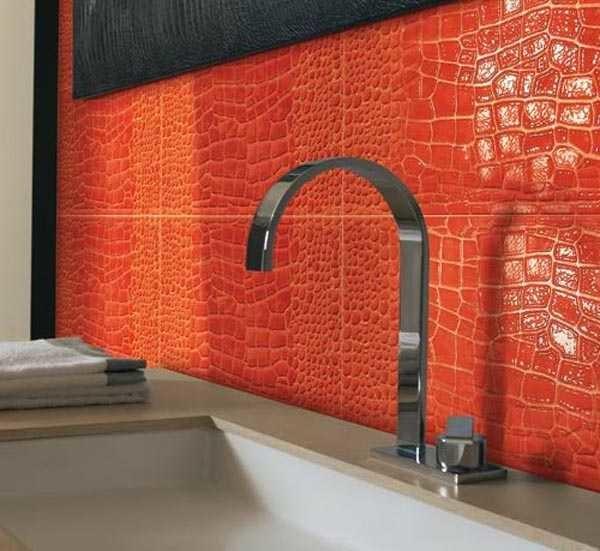
And in general, a lot of interesting ideas of how to finish the bathroom tiles. Different combinations, sometimes unexpected.
